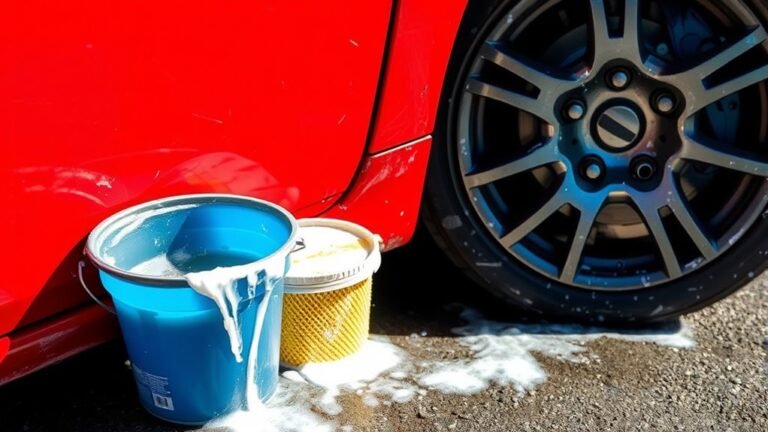Eco-Friendly Alternatives to Toilet
If you’re looking to cut water use and manage waste sustainably, you can choose composting toilets that break down waste naturally or dual-flush toilets to save water with every flush. Waterless urinals and vacuum toilets also reduce water use drastically, while incinerating toilets create minimal waste. Greywater recycling systems reuse bath and sink water for flushing, further conserving resources. There are even simple DIY options to customize. Exploring these can open up smarter, greener bathroom solutions.
Composting Toilets

Although they might seem unconventional, composting toilets offer a sustainable way to manage waste without relying on water or sewage systems. You’ll appreciate the freedom they bring, especially if you want to live off-grid or reduce your environmental footprint. There are several types of composting toilets, from self-contained units to central systems, each designed to break down waste efficiently using aerobic decomposition. Composting maintenance is straightforward but essential; you’ll need to regularly stir the contents and add bulking agents like sawdust to keep the process aerobic and odor-free. By understanding these basics, you can enjoy a low-impact lifestyle without sacrificing comfort. Composting toilets empower you to take control over your waste sustainably and independently, making them a smart choice for those seeking freedom and eco-conscious living.
Dual-Flush Toilets
When you want to cut down on water waste without changing your bathroom routine, dual-flush toilets offer a practical solution. This toilet design uses advanced flushing technology, giving you two flush options—one for liquid waste and one for solid. It’s a simple way to save water and keep your freedom to flush as usual.
| Benefit | Feeling it Brings |
|---|---|
| Water savings | Empowerment |
| Cost reduction | Relief |
| Easy operation | Control |
| Modern design | Pride |
| Environmental impact | Responsibility |
Choosing a dual-flush toilet means you’re embracing efficiency and sustainability without compromise. It’s about making smart choices that fit your lifestyle and values.
Waterless Urinals

You might be surprised how waterless urinals work without flushing a single drop. By using special traps or membranes, they keep odors contained while saving thousands of gallons of water each year. Choosing these can make a big difference in reducing water waste and lowering your environmental impact.
How They Work
Since waterless urinals don’t rely on flushing, they use a special trap filled with a liquid sealant that allows urine to pass through while blocking odors from escaping. When you use one, urine flows directly into the drain, bypassing the need for water. This means less dependence on plumbing systems and a simpler approach to waste management. Inside the system, biological breakdown plays a key role—naturally occurring bacteria help break down the urine, reducing buildup and maintaining cleanliness. You get a device that’s low-maintenance and designed to function efficiently without wasting a single drop of water. By choosing waterless urinals, you embrace freedom from traditional constraints, making waste disposal smarter and more sustainable without sacrificing hygiene or convenience.
Environmental Benefits
Although waterless urinals might seem unconventional, they offer significant environmental benefits that directly impact water conservation efforts. By eliminating the need for flushing, you save thousands of gallons of water annually, freeing you from wasteful habits tied to traditional toilets. These fixtures often incorporate sustainable materials, ensuring durability while reducing environmental footprints. Plus, their design supports waste reduction by minimizing the volume of liquid that enters sewage systems, cutting down on treatment energy and chemicals. Choosing waterless urinals means you’re actively embracing freedom from excessive water use and contributing to a cleaner planet. You get efficiency without compromise, advancing sustainability in both private and public spaces. It’s a smart, responsible choice that aligns perfectly with your desire to live eco-consciously while maintaining convenience.
Vacuum Toilets
When you flush a vacuum toilet, it uses considerably less water than traditional models by creating a powerful suction that quickly removes waste. This vacuum technology boosts toilet efficiency, letting you enjoy freedom from high water bills and frequent plumbing issues. You’ll appreciate how this system conserves water without sacrificing performance, making it a smart, eco-friendly choice for modern living.
| Feature | Benefit |
|---|---|
| Water Usage | Uses up to 80% less water |
| Suction Power | Efficient waste removal |
| Installation Flexibility | Can fit in tight or mobile spaces |
| Maintenance | Low due to sealed system |
| Environmental Impact | Reduces water waste markedly |
With vacuum toilets, you gain independence from wasteful habits while supporting a sustainable future.
Greywater Recycling Systems

If you want to reduce water waste even further, greywater recycling systems offer a practical solution by reusing water from sinks, showers, and laundry for toilet flushing and irrigation. By installing such a system, you gain independence from traditional water sources, cutting your environmental impact and utility bills. However, effective greywater treatment is essential to guarantee the water is safe for reuse; this usually involves filtration and disinfection components. You’ll need to stay on top of system maintenance, like cleaning filters and checking pumps, to keep everything running smoothly and avoid clogs or contamination. Embracing greywater recycling not only empowers you to conserve precious resources but also gives you the freedom to live sustainably without sacrificing comfort or convenience.
Low-Flow Toilets
You’ll find that low-flow toilets use considerably less water per flush, helping you save both water and money on bills. While the initial installation might require some effort and cost, the long-term benefits often outweigh these concerns. Let’s look at how these toilets can fit into your eco-friendly home.
Water Usage Reduction
Although traditional toilets use a significant amount of water per flush, low-flow toilets are designed to reduce water consumption without sacrificing performance. By choosing a low-flow model, you’re embracing freedom from wasteful habits and helping conserve precious resources. You can further enhance water savings by combining low-flow toilets with smart water strategies like:
- Rainwater harvesting to recycle water for non-potable uses.
- Landscaping with drought resistant plants to minimize outdoor water needs.
- Regular maintenance to prevent leaks that waste gallons daily.
This way, you’re not only cutting down on water use inside but also supporting a lifestyle that respects the environment. Reducing your toilet’s water footprint is a simple, effective step toward greater independence from traditional, resource-heavy systems.
Cost Savings Benefits
Switching to a low-flow toilet can save you hundreds of dollars annually on your water bill. By using considerably less water per flush, these toilets offer remarkable cost efficiency that directly benefits your wallet. Over time, the reduced water consumption translates into long term savings, freeing you from high utility costs and giving you more financial freedom. You won’t just be cutting monthly expenses—you’ll be investing in a sustainable choice that pays off year after year. Embracing a low-flow toilet means less waste and more control over your household budget. It’s a smart move for anyone looking to combine eco-conscious living with practical financial benefits, ensuring you save money while reducing your environmental impact effortlessly.
Installation Considerations
When considering a low-flow toilet, it’s important to understand the installation process to assure a smooth changeover. You want to avoid unexpected installation challenges that could limit your freedom or add hidden costs. Knowing your home’s plumbing requirements ahead of time helps you plan better and guarantees compatibility.
Keep these points in mind:
- Verify that your existing plumbing supports the reduced water flow without clogging.
- Prepare for possible adjustments to the flange or drain pipe to fit the new model.
- Consider professional installation if you’re unsure about handling the plumbing requirements yourself.
Incinerating Toilets
If you’re looking for a toilet option that completely eliminates water use, incinerating toilets might be the solution. They use a high-heat incineration process to turn waste into sterile ash, freeing you from plumbing and water bills. The advantages of incinerating toilets include minimal maintenance, odor control, and suitability for remote locations. You’ll enjoy independence while helping the environment by reducing water consumption.
| Feature | Benefit | Ideal For |
|---|---|---|
| Water Usage | Zero water needed | Off-grid living |
| Waste Disposal | Ash output only | Tiny homes |
| Maintenance | Easy ash removal | Cabins & RVs |
| Odor Control | Virtually odorless | Sustainable lifestyle |
| Installation | No sewer connection needed | Freedom seekers |
DIY Eco-Friendly Toilet Options
Although commercial eco-friendly toilets offer great benefits, building your own DIY version can be a rewarding and cost-effective way to reduce environmental impact. When you create a diy toilet, you take control over design and materials, ensuring sustainability and freedom from traditional systems. Using sustainable materials, you can build a toilet that suits your lifestyle and environment perfectly. Consider these options for your project:
Building your own eco-friendly toilet offers control, sustainability, and a personalized, cost-effective solution.
- Composting toilet: uses natural decomposition, no water needed
- Bucket system: simple, portable, and easy to maintain
- Sawdust toilet: combines waste with sawdust for odor control and composting
Frequently Asked Questions
How Do Eco-Friendly Toilets Impact Home Property Values?
You’ll find that eco-friendly toilets can boost your home resale value by increasing your property appeal to environmentally conscious buyers. When you choose sustainable features, you’re not just saving resources—you’re also making your home stand out in the market. This freedom to innovate can attract more offers and potentially higher prices, giving you a competitive edge while promoting a lifestyle that respects the planet.
Are There Government Incentives for Installing Eco-Friendly Toilets?
Like finding a hidden treasure map, government rebates and tax credits can guide you toward savings when you install eco-friendly toilets. You’ll often find these incentives designed to encourage conservation, giving you more freedom to invest in your home without breaking the bank. By tapping into these programs, you’re not only reducing your environmental impact but also revealing financial perks that make upgrading feel less like a chore and more like a smart adventure.
What Are the Maintenance Costs of Eco-Friendly Toilets?
You might find that installation expenses for eco-friendly toilets can be higher upfront, but don’t let that deter you. Once installed, you’ll enjoy long term savings through reduced water bills and less frequent repairs. These toilets are designed to be efficient and durable, giving you more freedom from constant maintenance worries. Investing a bit more now means you’ll save money and hassle down the road, freeing up your resources for what truly matters.
Can Eco-Friendly Toilets Be Used in Cold Climates?
Braving bitter blizzards? You’ll find that your eco-friendly toilet can conquer cold climates with clever winter performance features. Many models come with insulation options that shield against freezing, ensuring smooth operation even when temperatures drop. You won’t be tied down by traditional pipes prone to frost; instead, enjoy freedom in design and function. Just make sure to check for heated components or add insulation yourself to keep things flowing freely all winter long.
How Do Eco-Friendly Toilets Affect Septic Systems?
When you consider septic system compatibility, eco-friendly toilets usually reduce water usage, which can be great for your system’s longevity. They often generate less wastewater, easing the load on your wastewater treatment. However, some types might require specific maintenance or adjustments to your septic setup. You’ll want to check if your current system can handle the different waste breakdown process to keep everything flowing freely without costly repairs.






